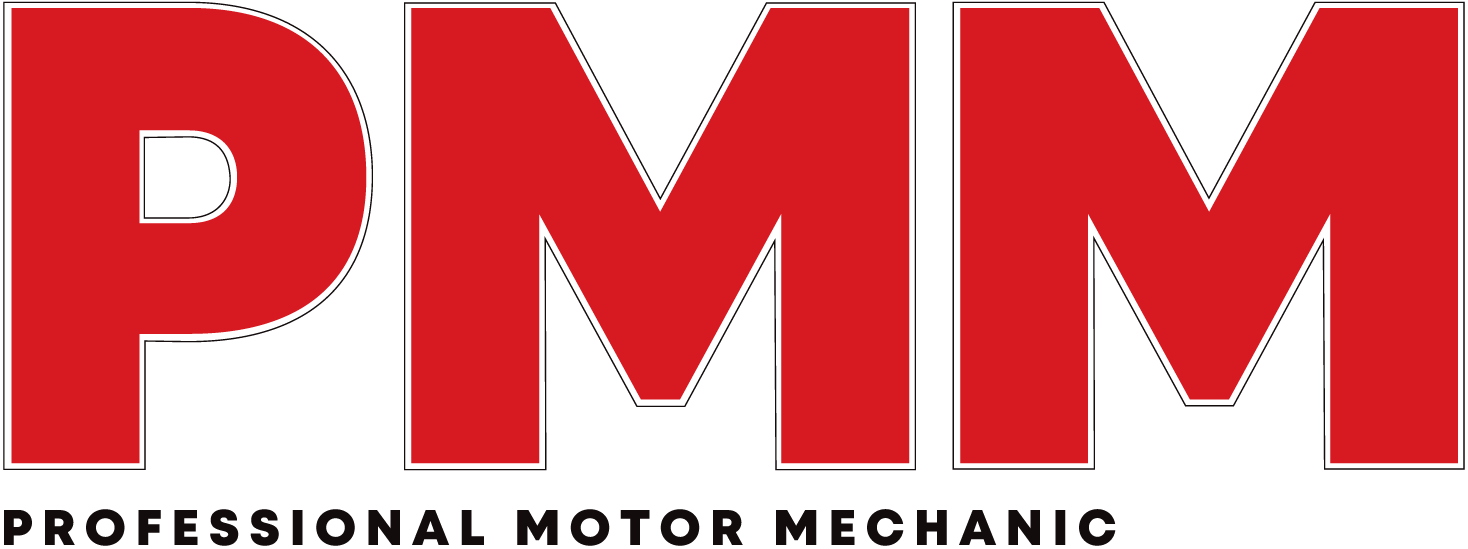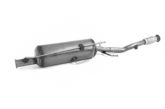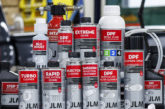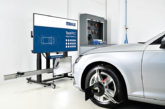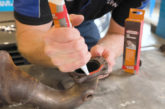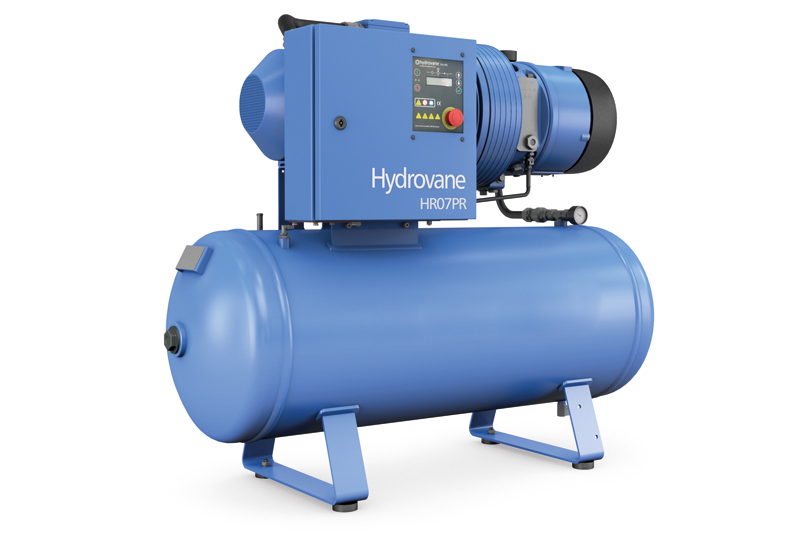
Ingersoll Rand’s sales manager Steve Downes is arguing that now might be the right time to switch from a traditional piston compressor to a vane model.
Whether its powering pneumatic tools, inflating tyres or spray painting and finishing, you’ll find a compressor hard at work in every workshop the breadth of the country.
Piston and vane compressors are both positive displacement compressors,meaning they compress air by physically reducing its volume. But they operate in very different ways.
As its name suggests, a piston compressor uses a piston inside a cylinder. As the piston moves down it draws air in and as it moves up, it compresses the air and pushes it out. In contrast, the vane design has a rotor offcentre in a circular housing. Vanes slide in and out of the rotor, trapping air in pockets and as the rotor turns, these pockets reduce in size, compressing the air.
This means that a piston compressor incorporates numerous moving parts, including valves, pistons and a crankshaft, all of which need lubrication. Compressed air is produced in pulses, meaning that air flow is intermittent, although with single or multi-stage operation, high pressures can be achieved.
A vane compressor has one major moving part and delivers a continuous air flow, which is smooth and steady. Air pressure is generally lower, which results in lower noise and vibration and a smooth and steady flow.
Lower noise
Automotive workshops are noisy places. The health and safety impact of noise exposure is now much better documented, and owners will want to ensure their workers are protected adequately.
Compressors tend to be positioned at the point of use and are one simple area to address when considering worker comfort and safety.
Vane compressors are typically much quieter and have lower vibration thanks to their smooth, rotary motion. The rotor spins continuously in one direction, without the back-and-forth and jolting action of a piston.
The means there is no sudden acceleration or deceleration of parts, a major source of vibration in piston compressors. And, as there is no vibration to contend with, there is no requirement for special mounts, helping to simplify set up and reduce installation costs.
This lower vibration also means that there is less stress on components and connected equipment, helping to extend machine lifetime and reduce the likelihood of breakdown.
Air is compressed steadily, rather than in pulses, which smooths out pressure fluctuations for quieter operation. Hydrovane compressors, for example, have fewer moving parts, meaning there are fewer sources of mechanical noise too.
Better reliability
In the busy workshop, owners want their team focused on the job in hand and getting through repairs and service work on schedule. Ancillary equipment, such as the compressor, needs to be highly reliable as any downtime for repair can impact on the day’s workload. While a piston compressor comes typically with a lower initial price tag, repair can be costly and complex. This means owners will often just purchase a replacement machine rather than attempt to fix the fault.
Piston compressors have no easy means of heat dissipation and rest time to reduce the build-up of heat. And while the compressor is cooling down, it is not generating the air that technicians need to power air tools, potentially delaying the day’s work.
This is an area where vane compressors can really pay dividends. A well-maintained vane machine can often have longer intervals between servicing – sometimes thousands of hours between major maintenance tasks.
The heat generated by compression is controlled by pressurised oil injection. The rotor, the only continually moving part, is directly driven at very low speed.
All of this adds up to a compressor which can deliver reliable operation for a very long time, quickly repaying the initial investment cost. Hydrovane sliding vane compressors for example can last over 100,000 hours – equivalent to eight hours of operation every working day for 40 years.
Space is often at a premium in garages and vane compressors are more compact compared to larger piston compressors, making them easier to integrate.
In some applications, such as spray painting, air quality is vital and piston machines cannot be equipped with air treatment devices due to the belt drive system dimensions. In contrast, a compressor like the new Hydrovane series 5 ensures is available as a complete air station with a filter and membrane dryer for a clean, dry compressed air.
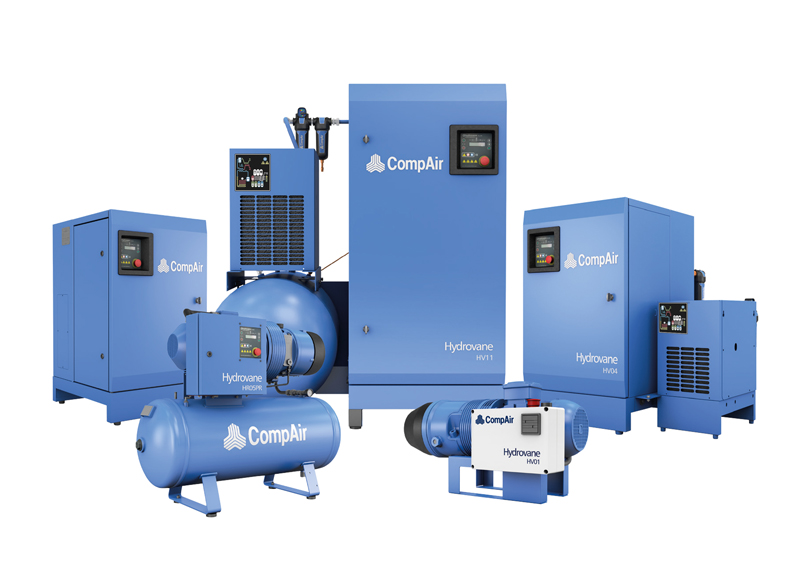
Reduced maintenance
As every garage mechanic knows, the more parts that move, the more things that can break or wear. With just one rotor, several sliding vanes and the housing, the design simplicity of a vane compressor can reduce maintenance considerably. Unlike a piston unit, there are no valves, pistons, connecting rods, crankshafts, or timing gears.
Valves can stick or fail and piston rings wear over time and the start/stop action of pistons creates shock loading.
Typical maintenance routines on a piston compressor include checking the oil weekly and changing approximately every 500-1000 hours. The air tank also needs draining where moisture has condensed to prevent rust or water in the air lines. Some compressors have automatic drain valves, but where this is not available, draining should be carried out daily.
Vibration from the piston action can loosen fittings, mounting bolts, and lines so these should be checked at least monthly. Pistons, rings, and valves are high-wear components that affect compression performance and should be checked every 2000-4000 hours or if pressure drops and noise increases.
By design, rotary vane compressors have less internal friction and fewer wear surfaces. The slow rotating speed of the vane technology limits mechanical fatigue so components last longer. The compressor tends to run cooler too, especially when oillubricated, reducing thermal stress and the breakdown of lubricants. Regular maintenance usually includes changing or topping up the oil, replacing the air/oil separator and filters Hydrovane compressors are designed for quick service, with easy access panels and fewer tools needed.
For garage owners looking for lower long-term costs, vane compressors offer a compelling alternative to traditional piston models. While the upfront investment may be higher, the long service life and reliability make vane compressors a smart choice.
